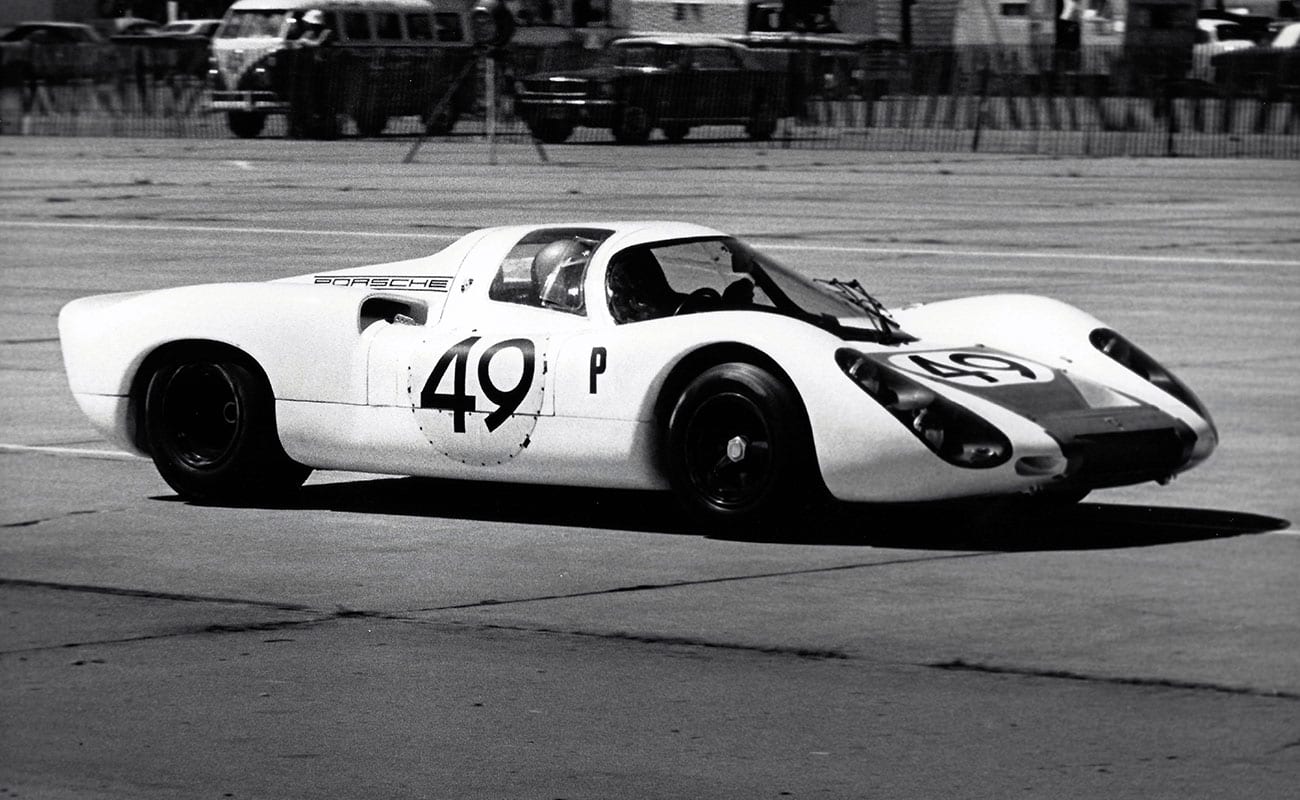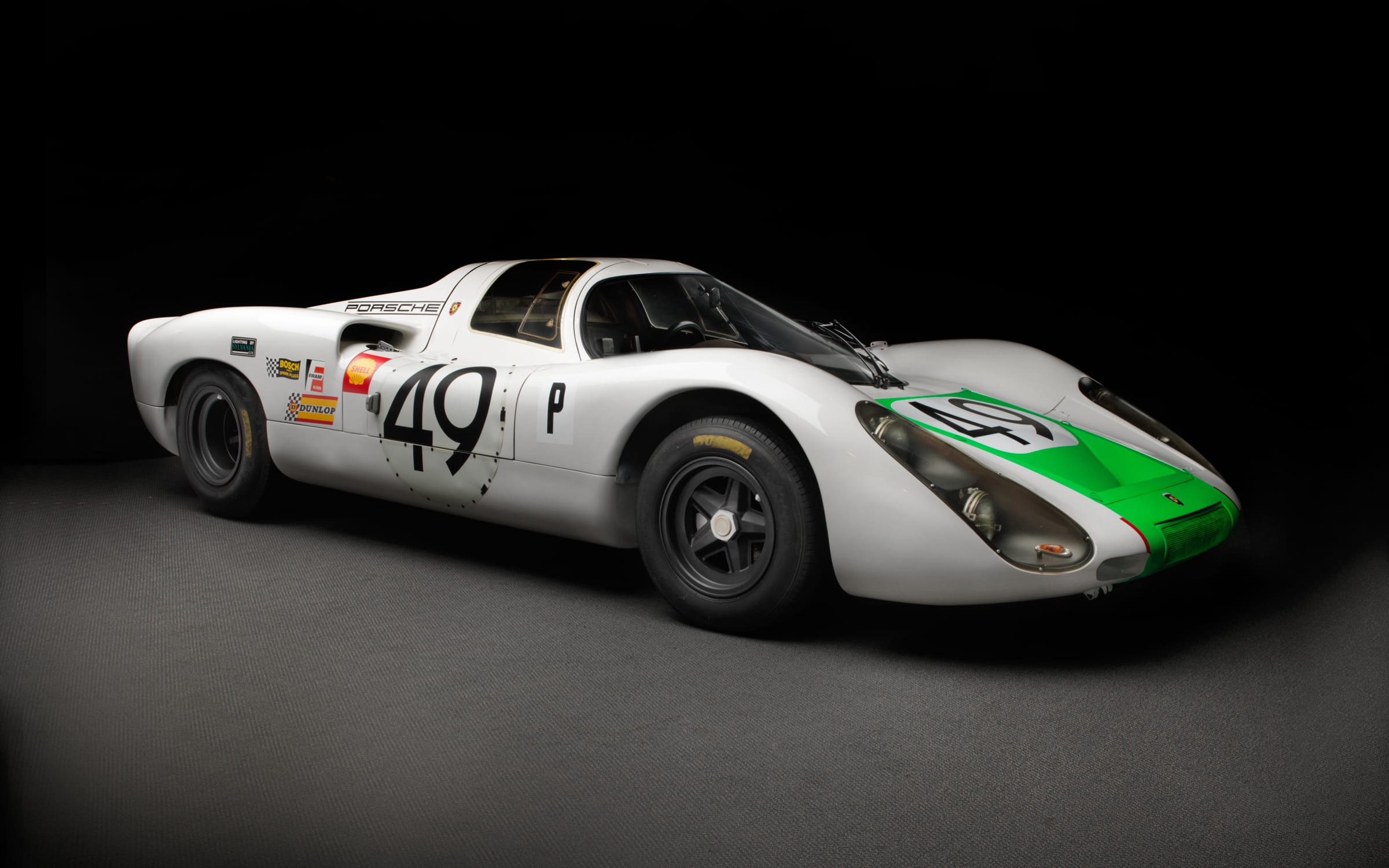Tech Specs
Flat-eight air-cooled engine, mounted midship, twin overhead camshafts, fuel injected, 2196cc, 278hp at 8700 rpm
Before/After
1968 Porsche


About the 1968 Porsche 907K
Porsche proved at Daytona in January 1968 that it could beat the road-racing world’s best. A trio of elegant long-tail 907s finished 1-2-3 in the Daytona 24-hour race.
In 1967, Porsche used the 910 to prove it could be faster with 2.0-liter engines than some automakers were with 5.0 liters. Using the 910 as a starting point, Porsche developed the 907 for 1968, refining the suspension and swapping the classic 2.0-liter flat-6 for the sophisticated Type 771 2.2-liter air-cooled flat-8.
Porsche further tuned the aerodynamics of the fiberglass body and moved the steering to the car’s right side to allow for the world’s predominantly clockwise racetracks. There was even a NASA-developed cool suit system to aid drivers, who wore thick fire-resistant Nomex driving suits.
Porsche brought four new 907s with short-tail bodies to the rugged Sebring circuit in March. Seven laps in, one 907 was out, and a second suffered engine troubles after 46 circuits. Not to worry, as the other two dominated the race. Porsche 907 024 with drivers Hans Herrmann (Germany) and Jo Siffert (Switzerland) went from the pole position to a dominating victory at an average speed of 102.512 mph, 10 laps ahead of its sister 907.
Following a post-race factory rebuild, Jamie Ortiz-Patiño, heir to a Bolivian tin fortune, acquired 907 024 from Porsche for his godson Dominique Martin. Martin raced the car six times in 1969-70 before the Ortiz family tucked it away for 44 years.
It’s estimated about 21 907s were built, many later converted to 908s.


















